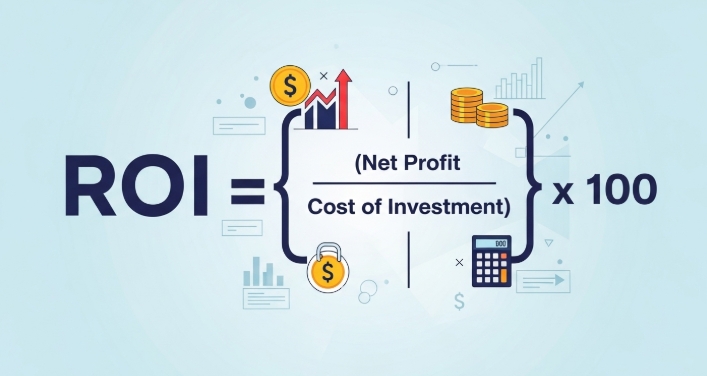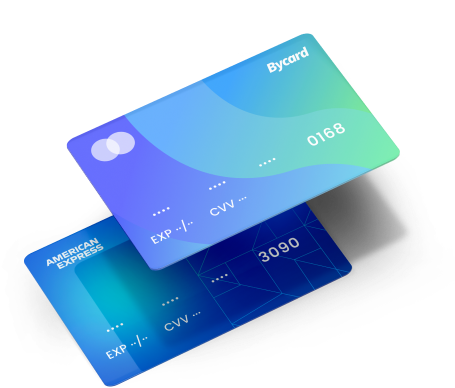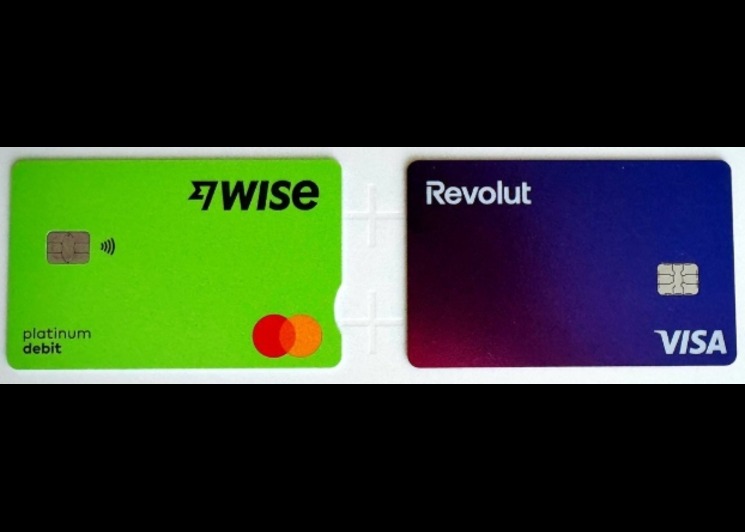What is an ROI and Why It Shapes Every Business Decision

When people ask what is an ROI, they’re really trying to understand whether their efforts are paying off. ROI or Return on Investment, measures how much value you gain compared to what you spend. It’s a straightforward way for businesses to see if campaigns, products, or strategies are truly generating profit. Understanding what is ROI in business gives teams a clear picture of performance, helping them make better financial and operational decisions.
Tracking ROI accurately depends on more than just formulas; it’s about managing spend efficiently and keeping data clean. That’s where platforms like Bycard come in. Bycard’s virtual cards and spend control tools make it easier for teams to track campaign costs, manage multiple currencies, and see exactly how each expense contributes to their ROI.
- What is an ROI and Why It Shapes Every Business Decision
- Understanding what is ROI in business
- How to compute what is ROI in business step-by-step
- Key practical uses of what is an ROI
- Limitations when calculating what is ROI in business
- Example of applying what is an ROI in business
- Benchmarks and what counts as “good” for what is ROI in business
- How to improve what is an ROI in business
- How Bycard helps answer what is ROI in business for spend control
Understanding what is ROI in business
If you’re thinking “what is ROI in business?”, here’s a clear summary: it’s the metric that tells you how much profit (or loss) you’ve gained from an investment, relative to the cost of that investment. Put simply: you spend X, you get Y back, and ROI shows Y as a percentage of X.
Why this matters for business
- Businesses regularly face choices: Should I buy new equipment? Launch a campaign? Hire an extra person? By calculating what is ROI in business, you can compare these options.
- It’s often used not just for major capital investments but for everyday decisions: e-commerce ads, software subscriptions, training programmes.
- It gives a common scale: percentage, which helps compare across very different kinds of spend.
If you spend $1,000 on marketing and earn $5,000 in profit, ROI = (5,000 ÷ 1,000) × 100% = 500%. That tells you every $1 invested brought $5 in return.
How to compute what is ROI in business step-by-step
Here’s how to calculate what is ROI in business in practical terms:
- Define the investment: What are you spending on? e.g., $10,000 on equipment.
- Measure returns: How much extra profit did it generate? Say $15,000.
- Calculate net profit: $15,000 − $10,000 = $5,000.
- Apply the formula: ROI = ($5,000 ÷ $10,000) × 100% = 50%.
This simple process helps you not just understand but measure what is an ROI. For marketing teams using platforms like Bycard, tracking spending by campaign or channel becomes easier because each virtual card can represent a separate investment. This means when calculating what is ROI in business, your cost inputs are already organised per campaign, saving time and giving cleaner data

Perfect Card for better ROI tracking!

Key practical uses of what is an ROI

- Decision-making: Compare two marketing campaigns, the one with higher ROI is usually more efficient.
- Budget prioritisation: Direct funds toward initiatives with stronger ROI.
- Performance tracking: After each investment, measure ROI to see what’s working.
- Risk assessment: Negative or low ROI signals a need to adjust or stop spending.
For example, if you spend $5,000 on a campaign and earn $1,500 in net profit, ROI = 30%. That tells you whether to scale or rethink the effort. Tools like Bycard can help teams allocate budgets with precision, setting spend limits per campaign or department. This way, tracking what is ROI in business becomes a living process, not just an afterthought during audits.
Limitations when calculating what is ROI in business
While what is ROI in business is useful, it has a few limits:
- Time factor: It ignores how long returns take, 50% ROI over one year is better than the same over five.
- Hidden costs: Omitted costs like maintenance or downtime can inflate ROI.
- Intangible benefits: ROI may not capture brand growth or customer loyalty, which still matter.
Always interpret ROI alongside time, risk, and broader value. One of the common challenges when assessing what is an ROI in business is missing or misattributed expenses. With Bycard’s automated expense tracking and reconciliation tools, companies can reduce these blind spots and get a truer picture of their ROI
Example of applying what is an ROI in business
Imagine a company spends $2,000 on a digital marketing campaign and gains $6,000 in additional revenue. To understand what is an ROI, you start by identifying the cost and the profit made from that investment.
Cost: $2,000
Profit: $6,000 − $2,000 = $4,000
Now apply the formula:
ROI = (4,000 ÷ 2,000) × 100% = 200%
That means for every dollar invested, the business gained two dollars in net profit. This example clearly shows what is an ROI in business, it measures how efficiently your investment generates profit. Knowing what is an ROI helps businesses evaluate whether campaigns, tools, or strategies are delivering real value relative to their cost.
Benchmarks and what counts as “good” for what is ROI in business
When assessing what is an ROI in business, there’s no single percentage that defines success, it depends heavily on context. Industry, risk level, and time horizon all influence what a “good” ROI looks like. For instance, many small and mid-sized businesses consider annual ROIs of 12–20% as healthy and sustainable, while high-growth or early-stage ventures often target much higher figures to justify greater risk.
It’s also important to compare returns within your own sector. A 15% ROI might be excellent in a low-margin retail business but below average for a fast-scaling tech company. The timeframe matters too, earning 25% over six months is far more efficient than 25% spread over three years. Understanding what is an ROI in practical terms means evaluating both profitability and speed of return, always relative to alternatives.
How to improve what is an ROI in business
- Reduce costs: Negotiate better deals or streamline processes.
- Increase returns: Improve conversions, retention, or pricing.
- Speed up payback: The quicker your investment returns, the higher its effective ROI.
- Track data: Use actual numbers, not projections, for accuracy.
Consistently revisiting what is ROI in business helps refine future decisions.
How Bycard helps answer what is ROI in business for spend control
Bycard is a virtual-card platform built for fast media buying, global payments, and tight spend control, features that map directly to better measurement and higher ROI.
Bycard offers instant virtual credit cards, budget management, receipt and expense reporting, reconciliation tools, and tailored virtual cards for major ad platforms (Google, Facebook, TikTok, etc.).
How that matters to what is ROI in business:
- Instant virtual cards for media buying: create a card per campaign or vendor to isolate spend and attribute returns cleanly. That makes it easier to measure campaign revenue vs. cost, which is the core of what is ROI in business.
- Budget management and spending limits: prevent overspend and cap ad costs per campaign, reducing wasted budget and improving the net profit used in ROI calculations.
- Receipt management and expense reporting: automate matching payments to invoices and campaign receipts so your “cost of investment” number stays accurate when calculating ROI.
- Reconciliation tools: faster, error-free reconciliations reduce hidden or ambiguous costs that can skew ROI estimates. Clean books mean cleaner ROI.
- Global acceptance and quick activation: less downtime to start campaigns and the ability to spend in local currencies reduces conversion friction and FX losses, which helps preserve profit margins: another key part of ROI.
Conclusion
When you ask what is an ROI, it’s the ratio between what you gain and what you invest, but in business, it’s also a lens for evaluating every decision. Understanding what is ROI in business helps you see which efforts create real value and which ones drain resources. The more accurately you track and interpret ROI, the better your strategic and financial choices become.
That’s where Bycard adds clarity. With its virtual cards, budget controls, and automated expense tracking, businesses can connect every payment to its outcome, making ROI not just a calculation but a habit.







